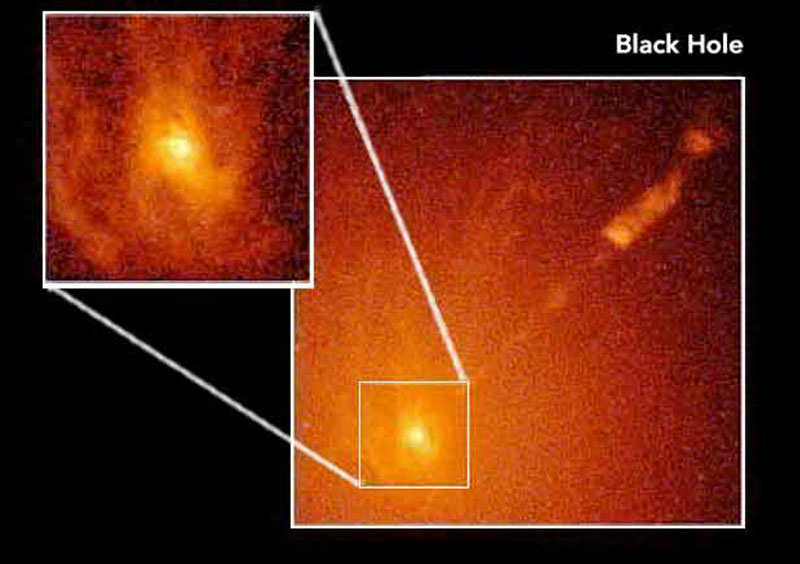Black Hole
Afterlife of Stars
After a supernova explosion has occurred, sometimes a dense ball of neutrons remain in the core of the star and form what is known as neutron star. Typical neutron stars are very small, no more than 20 km in diameter. However, they have a great deal of mass, much greater than even our Sun. A neutron star can send pulses of energy and light that can be detected as radio signals and is known as a pulsar. In some regions of space, the pull of gravity is so great that nothing–not even light–can escape. These regions or black holes were possibly caused by the collapsing of very massive neutron stars. Certain distant galaxies have centers that are a hundred times brighter than ordinary galaxies. These centers are called quasars (quasi-stellar objects) and are probably very large black holes that are drawing in all sorts of glowing stellar matter.
A black hole is a region of space where the pull of gravity is so great that nothing–not even light–can escape. A possible outcome of the evolution or collapse of a very massive star.

Black Hole
The image below is of a massive black hole in the center of the giant elliptical galaxy M87, located 50 million light years away in the constellation Virgo. Earlier observations suggested the black hole was present, but were not decisive. This observation provides strong support for the existence of gravitationally collapsed objects, which were predicted 80 years ago by Albert Einstein’s general theory of relativity.
